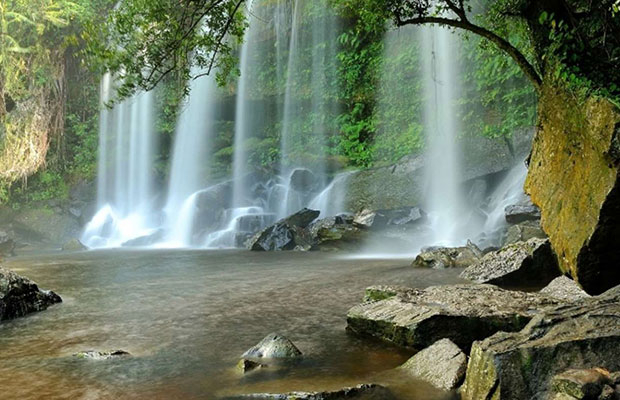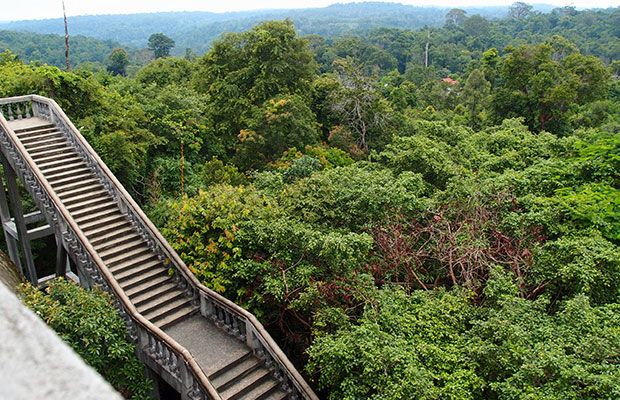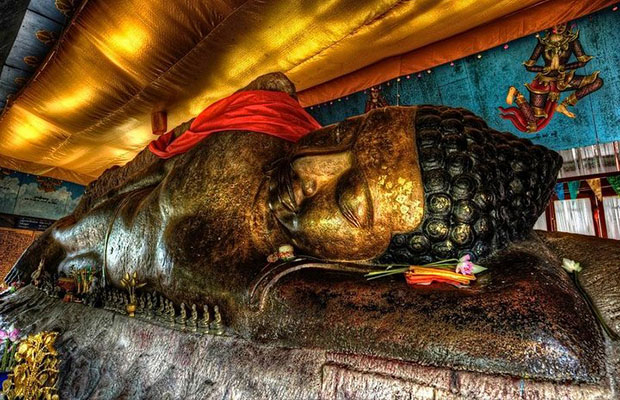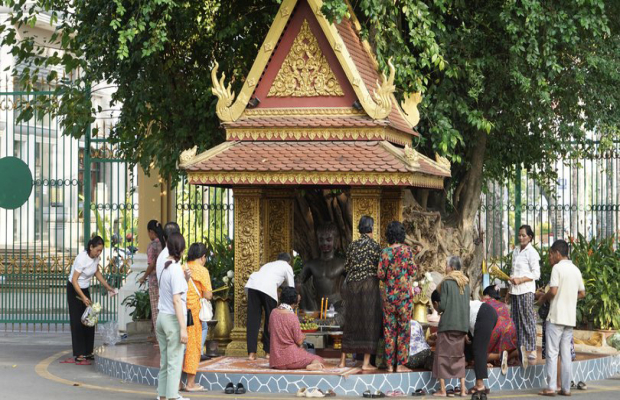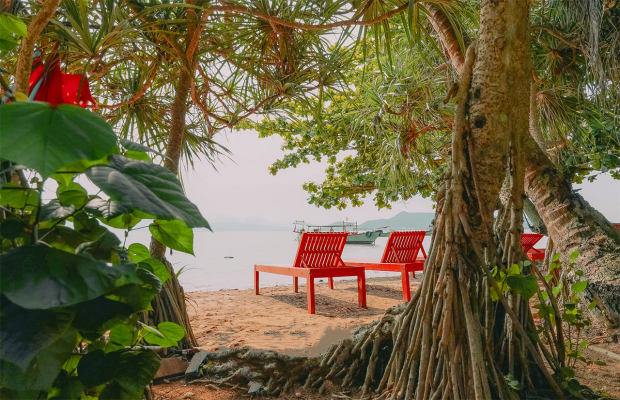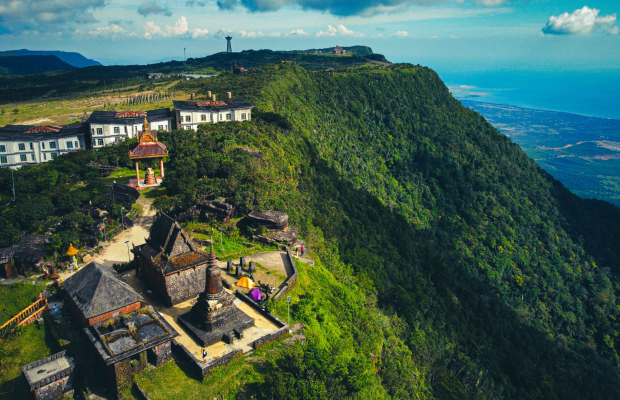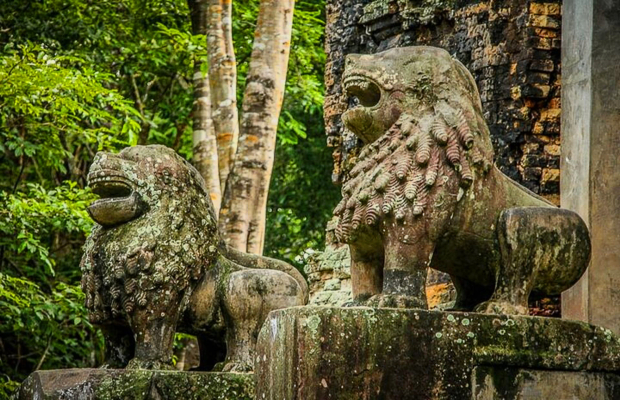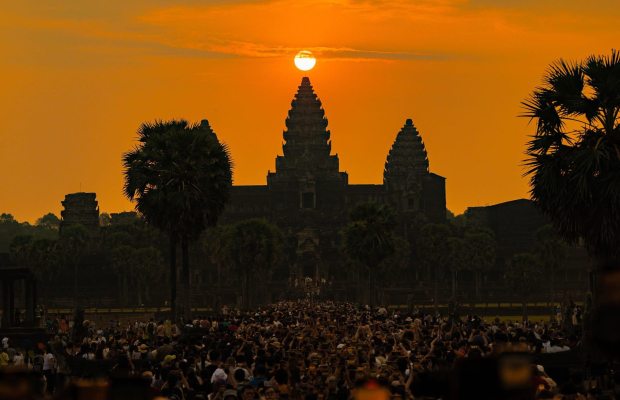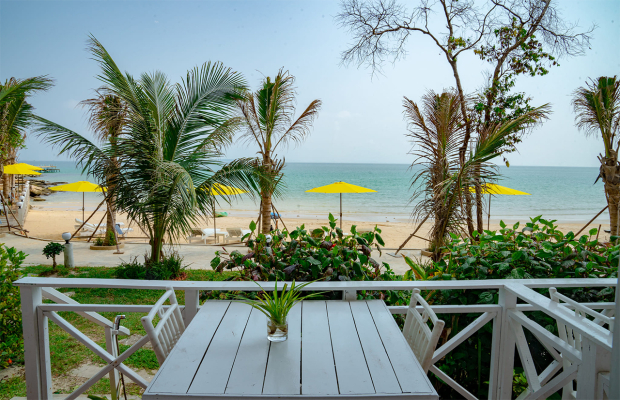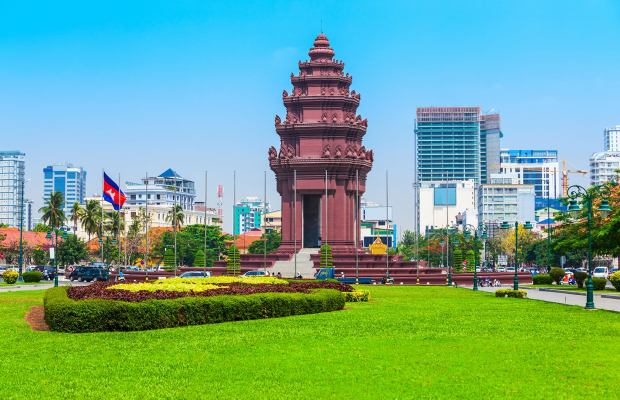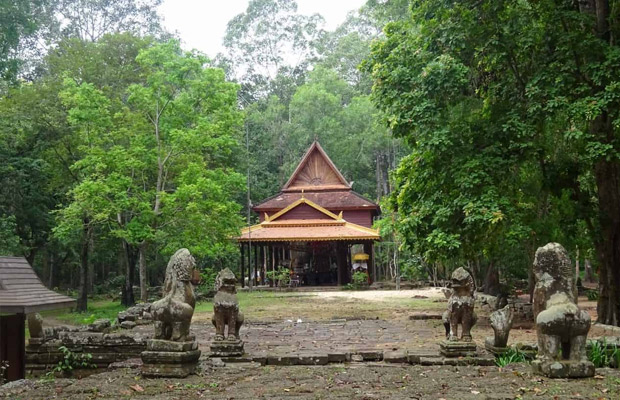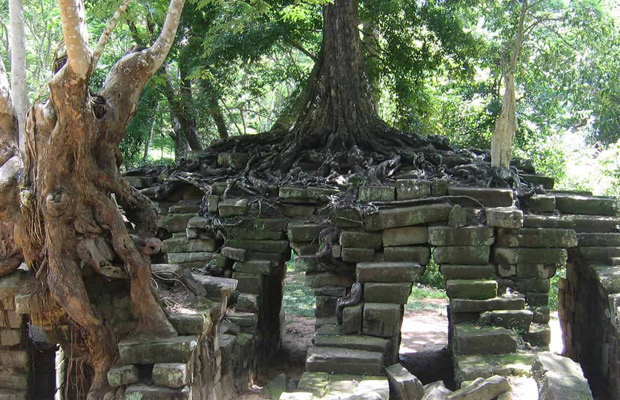Cambodia Temple Guide
Phnom Kulen National Park
Phnom Kulen National Park is a National park in Cambodia. It is located in the Phnom Kulen mountain massif in Siem Reap Province. During Angkorian era the relief was known as Mahendraparvata (the mountain of Great Indra) and was the place where Jayavarman II had himself declared chakravartin (King of Kings), an act which is considered the foundation of Khmer Empire.
Archaeological sites
Phnom Kulen National Park is located in Svay Leu District about 48 km from the provincial town of Siem Reap and about 25 km from Prasat Banteay Srey via Charles De Gaulle Road. At Phnom Kulen there are several attractive places, such as:
+ Chup Preah
Chup Preah is the plain spot where having cool water flows and is located at the mountain’s valley. Next to it, there is a rare big tree of Cham Pa having 0.7 meter diameter and 15-meter height. At Chup Preah, there is a big Buddhist statue and many other small statues made during 16th century.
+ Linga 1,000
Linga 1,000 is located on the mountain, along the Siem Reap River and has a lot of figures of Yoni and Linga spreading out at the bottom of the river.
+ Terrace of Sdach Kamlung
Terrace of Sdach Kamlung is a plain terrace having a small ruined temple made of solid brick at the middle; the study proves that the terrace was covered by lava for hundreds years.
+ Preah Ang Thom
Preah Ang Thom is an 8 meter tall statue of the reclining Buddha reaching nirvana. The statue is carved into a huge sandstone boulder. Preah Ang Thom is the sacred and worshipping god for Phnom Kulen. There are also two big trees of Cham Pa at nearby. Besides Preah Ang Thom, there are Chhok Ruot, footprint of Preah Bat Choan Tuk, Peung Chhok, Peung Ey So and Peung Ey Sey
+ Phnom Kulen Waterfall
There are two main waterfalls in Phnom Kulen:
- First waterfall: 4-5 meter tall and 20-25 meter wide during the dry and rainy seasons respectively.
- Second waterfall: 15-20 meter tall and 10-15 meter wide during the dry and rainy seasons respectively.
+ Archeological activities
After initial reconnaissances by French scholars, the historical relevance of Phnom Kulen was pointed out by Philippe Stern, who visited it in 1936 and described Rong Chen as the first temple-mountain. In 1973 and 1979 Jean Boulbet and Bruno Dagens published the fundamental archeological inventory and mapping of Phonm Kulen. In 2008 Archaeology & Development Foundation begun Phnom Kulen Program, an archaeological project focused even on sustainable development of local communities.

